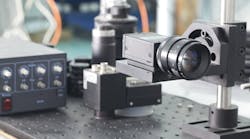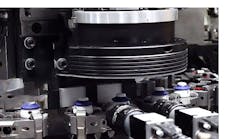Sophisticated classifiers antialias MRI data
Magnetic-resonance-imaging (MRI) systems used for medical diagnosis often treat volumetric pixels (voxels) as single points unrelated to the voxels that surround them. Because of this, reconstructed MRI images often appear aliased--they have jagged edges that represent discontinuous pixel functions.
David Laidlaw (dhl@mailhost. gg.caltech.edu) at the California Institute of Technology (Pasadena, CA) has classified MRI data more preciselyand thus has developed two algorithms that model surface boundaries between images and reduces aliasing effects. By treating each voxel as a small region of space that can have different values at different positions, it possible to create a continuous function and create a local histogram for each voxel. Values of voxels that lie at surface boundaries are then computed by determining the histogram of voxels in the surface boundary. As this function is directly related to values of pixels at points surrounding the boundary, the result of the computation is a series of voxels that are continuous.
There is no discontinuity at image boundaries. By applying these algorithms to MRI data, Laidlaw has shown that more accurate surface boundaries between data in images can be visualized. Laidlaw and his colleagues are currently at work extending the algorithms to sub-voxel data sets and developing ways to implement the algorithms in parallel.




